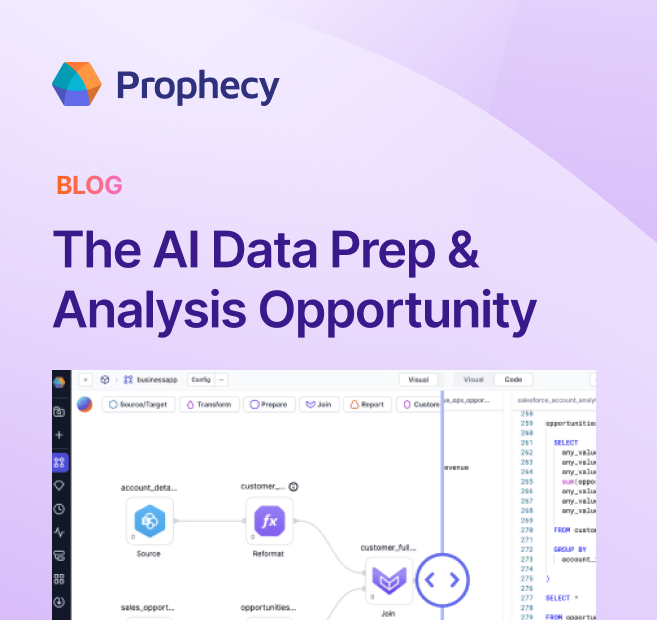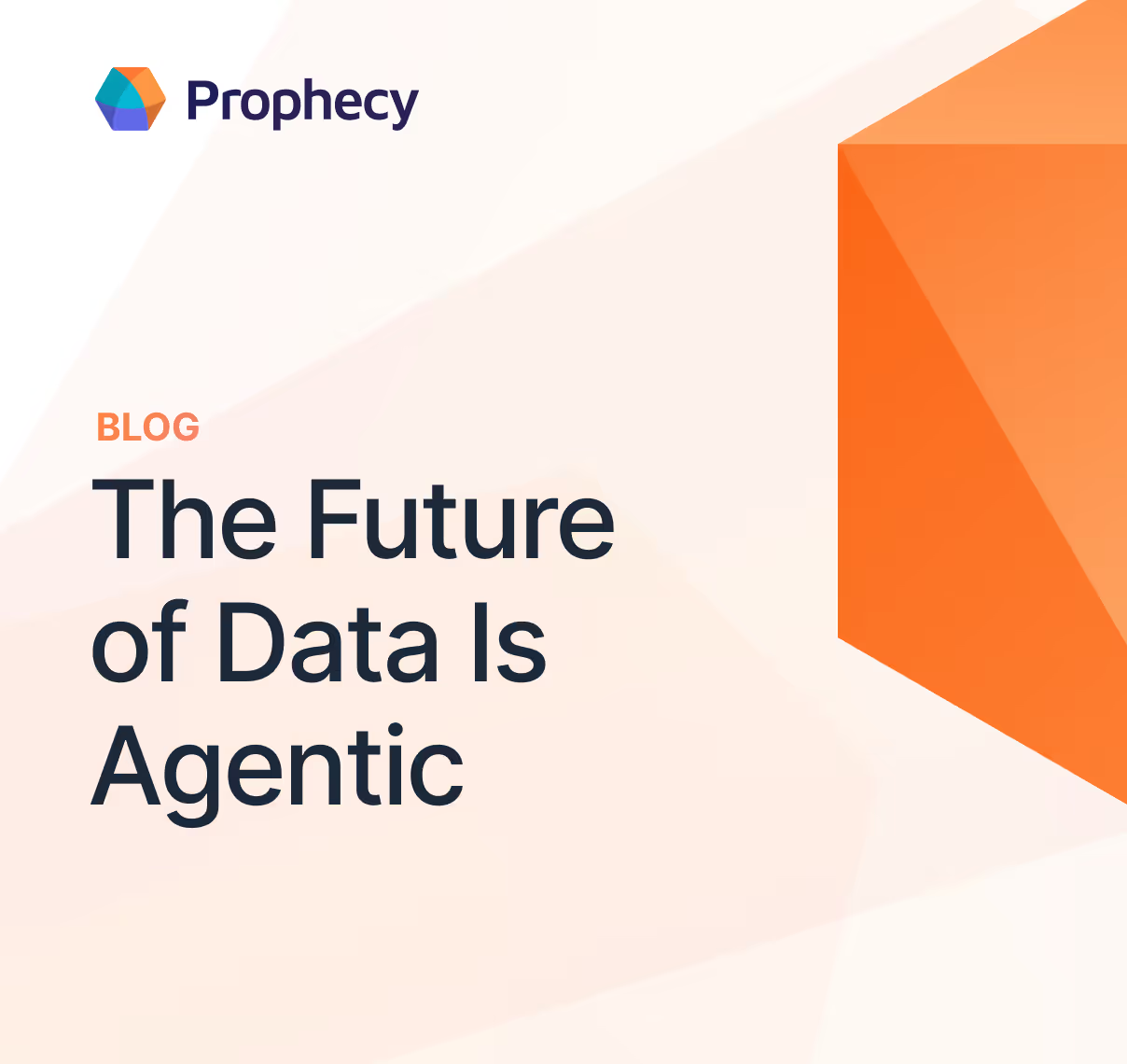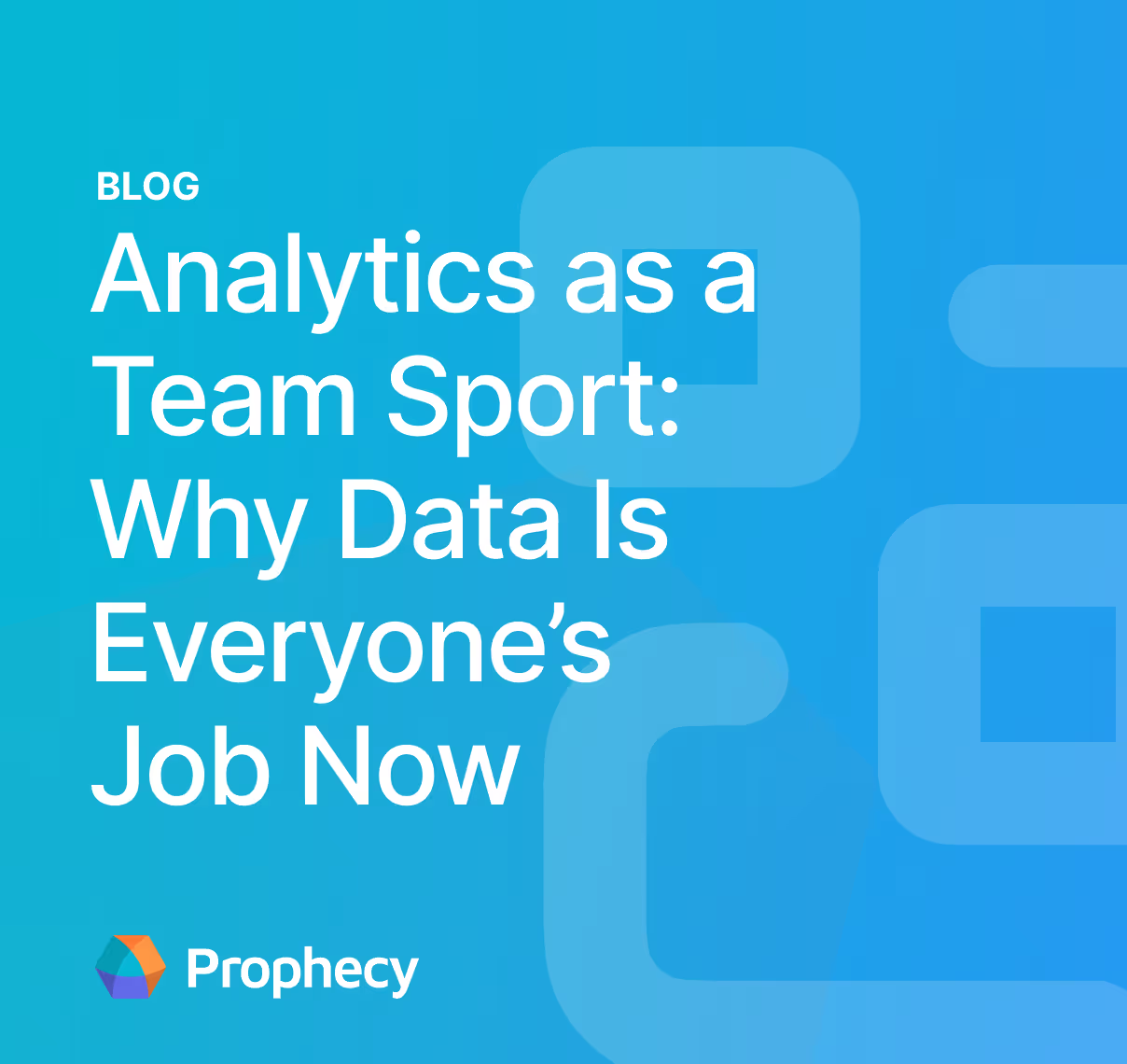12 Must-Have Skills for Data Analysts to Avoid Career Obsolescence
Discover the critical data analyst skills modern organizations demand, including both technical and soft skills.
Gone are the days when analysts could succeed by simply knowing SQL, pulling reports from static databases, and creating basic visualizations. Today's data terrain demands a new breed of analysts—one who can navigate complex cloud environments, collaborate across technical and business teams, and extract insights from increasingly diverse data sources.
With data volumes exploding and business demands for real-time intelligence growing, analysts find themselves at the center of this transformation.
Analysts who thrive in this environment possess a unique blend of technical proficiency, business acumen, and collaborative skills that enable them to bridge the gap between raw data and informed strategic decision-making.
Whether you're looking to advance your current career or transition into data analysis, mastering these 12 capabilities will position you for success across industries and organizational environments.
1. Data discovery and business requirement translation
Modern analysts succeed by bridging business questions and data reality, understanding how to navigate organizational data assets and translate strategic questions into analytical approaches. This fundamental skill determines whether analysts become strategic partners or report generators.
Data catalog navigation enables analysts to discover relevant data sources independently, understand data lineage and quality indicators, and assess whether available data can answer specific business questions. This includes interpreting metadata, understanding data relationships, and knowing when to escalate data quality concerns.
Business requirement decomposition involves breaking down complex business questions into manageable analytical components. Rather than simply fulfilling data requests, effective analysts probe deeper to understand underlying business drivers, identify the metrics that truly matter, and frame hypotheses that guide analytical approaches.
Context gathering skills enable analysts to understand industry benchmarks, competitive landscapes, and organizational constraints that shape how analytical findings should be interpreted and presented. This business context transforms raw analytical output into actionable intelligence.
2. Visual development and AI-assisted workflows
The evolution of analytical tools has created opportunities for analysts to build sophisticated data workflows without deep programming expertise. Modern platforms provide visual interfaces and AI assistance that enable analysts to focus on analytical thinking rather than coding syntax.
Visual pipeline development through drag-and-drop interfaces allows analysts to create complex data transformations, joins, and aggregations while automatically generating production-quality code. This approach eliminates the traditional bottleneck where analysts design workflows but depend on engineers for implementation.
Similarly, AI copilot integration enables analysts to describe their analytical needs in natural language and receive suggested transformations, validation rules, and optimization recommendations. These tools accelerate development while providing learning opportunities that gradually expand technical capabilities.
Template and component reuse skills help analysts leverage standardized, governed components created by engineering teams while customizing them for specific business needs. This collaborative approach maintains technical standards while enabling analytical independence.
3. Data reconciliation and quality assurance
Data reconciliation—the process of ensuring consistency and accuracy across different data sources and systems—has become a critical skill as organizations rely on increasingly complex data ecosystems. Analysts must be able to identify discrepancies, trace data lineage, and implement systematic approaches to data validation.
Modern reconciliation work involves comparing data across source systems, staging areas, and final analytical datasets to ensure transformations maintain accuracy. This requires understanding how to design and implement data quality checks, establish robust data ingestion processes, create exception reports, and establish ongoing monitoring processes that catch issues before they impact business decisions.
Proficiency in data profiling techniques enables analysts to quickly assess data quality, identify patterns and outliers, and understand the characteristics of new datasets. This includes statistical analysis of distributions, completeness checks, and validation of relationships between different data elements.
Automated reconciliation processes have become essential for maintaining data quality at scale. Analysts should know how to design and implement systematic validation rules, create alerting mechanisms for data quality issues, and document reconciliation procedures that ensure consistent data processing over time.
4. Cloud data platform proficiency
Modern data analysis is increasingly conducted in cloud environments, making platform-specific skills essential for career advancement. Databricks proficiency has become particularly valuable, as organizations leverage its unified analytics capabilities to support both data engineering and analysis workflows.
Understanding how to navigate Databricks workspaces, create and manage clusters, and work within collaborative notebook environments enables analysts to leverage powerful distributed computing resources. This includes knowing how to optimize cluster configurations for different workloads and understanding the cost implications of various processing options.
Integration capabilities and data orchestration across cloud ecosystems—including connections to data lakes, data warehouses, and external APIs—allow analysts to access diverse data sources and build modern ETL processes without relying on engineering teams. This self-sufficiency dramatically increases analytical productivity and reduces time-to-insight for business questions.
Security and governance features within cloud platforms require an analyst's understanding to ensure compliant data usage. This includes working with access controls, understanding data classification systems, and adhering to organizational policies for data handling and sharing across various environments.
5. Data visualization and storytelling
Effective data visualization goes far beyond creating charts—it requires understanding how to translate complex analytical findings into compelling narratives that drive business action. Modern analysts must master both technical visualization tools and the principles of visual communication.
Proficiency in enterprise visualization platforms, such as Tableau, Power BI, or Databricks' built-in visualization capabilities, enables analysts to create interactive dashboards that serve the diverse needs of stakeholders. This includes understanding when to use different chart types, designing for mobile consumption, and developing self-service analytics experiences.
Statistical visualization skills enable analysts to communicate uncertainty, illustrate relationships between variables, and present complex analytical results in clear and accessible formats. This includes creating compelling scatter plots, box plots, and correlation matrices that reveal insights while remaining interpretable to business audiences.
Storytelling with data requires understanding audience needs, structuring presentations that guide viewers through analytical findings, and creating compelling narratives that connect data insights to business outcomes. These skills transform analysts from report generators into strategic advisors who influence organizational decision-making.
6. Business acumen and domain expertise
Technical skills alone don't make successful analysts—understanding the business context behind data requests and analytical projects enables analysts to provide insights that truly impact organizational performance. This business acumen develops through active engagement with stakeholders and a deep understanding of organizational goals.
Industry-specific knowledge enables analysts to ask more informed questions, identify relevant metrics, and detect anomalies that may signal significant business trends. Whether working in finance, healthcare, retail, or technology, by breaking down data silos, analysts can integrate data from across the organization to deliver more valuable insights.
Stakeholder management skills enable analysts to gather requirements effectively, manage expectations for analytical projects, including self-service BI projects, and communicate findings in a language that resonates with diverse audiences. This includes understanding how different roles consume analytical information and adapting communication styles accordingly.
Strategic thinking further enables analysts to identify opportunities where data can drive business value, propose analytical solutions to organizational challenges, and prioritize their work based on its potential impact.
These skills transform analysts from order-takers into strategic partners who actively contribute to business planning and decision-making.
7. Collaborative development and version control
Modern analytical work increasingly happens in collaborative environments where multiple analysts and engineers work together on shared projects. Version control systems, such as Git, have become essential for managing analytical code, tracking changes, and facilitating team collaboration.
Understanding branching strategies, pull requests, and code review processes allows analysts to contribute to team projects while maintaining code quality standards. This includes knowing how to resolve conflicts, write meaningful commit messages, and use Git workflows that support analytical development cycles.
Collaborative notebook environments, particularly in platforms like Databricks, enable real-time collaboration on analytical projects. Leveraging low-code development tools can further enhance productivity and collaboration.
Analysts should understand how to structure notebooks for sharing, document their analytical processes clearly, and use collaborative features that allow team problem-solving.
Documentation skills become critical in collaborative environments where analytical work must be reproducible and maintainable by team members. This includes writing clear code comments, maintaining project documentation, and creating analytical workflows that others can understand and extend.
8. Self-service analytics and data democratization
The shift toward self-service analytics has transformed how analysts work, requiring skills that enable independent data exploration while maintaining governance and quality standards. Modern analysts must be comfortable working in environments where they have direct access to data sources and self-service analytics tools.
Understanding metadata management enables analysts to discover relevant data sources, understand data lineage, and assess data quality independently. This self-sufficiency reduces dependence on engineering teams while ensuring analysts work with appropriate and current data.
Data governance awareness further enables analysts to navigate organizational policies regarding data access, usage, and sharing. This includes understanding data classification systems, privacy requirements, and approval processes that ensure compliant analytical work.
Quality assurance skills become more critical as analysts work independently. This includes implementing validation checks in analytical workflows, documenting data sources and transformation logic, and creating repeatable processes that maintain accuracy over time.
9. Statistical analysis and experimental design
Modern business environments require analysts who can design and analyze experiments, understand statistical significance, and communicate uncertainty effectively. These skills enable analysts to support data-driven decision making with rigorous analytical methods.
A/B testing and experimental design capabilities enable analysts to help organizations systematically test business hypotheses. This includes understanding sample size calculations, randomization strategies, and how to analyze experimental results while accounting for confounding factors.
Statistical modeling skills—including regression analysis, time series forecasting, predictive analytics, and clustering techniques—enable analysts to identify trends, make predictions, and segment data in ways that support business strategy. While deep statistical expertise isn't always required, understanding when and how to apply these techniques adds significant value.
Uncertainty quantification and confidence interval interpretation help analysts communicate the reliability of their findings and avoid overconfident conclusions. These skills are fundamental when analytical results inform high-stakes business decisions.
10. Data governance and compliance
As data regulations intensify globally and organizations prioritize responsible data usage, analysts must understand governance principles and compliance requirements that affect their work. This knowledge ensures analytical projects meet organizational standards while avoiding regulatory risks.
Privacy protection skills—including understanding of GDPR, CCPA, and other data protection regulations—enable analysts to work with sensitive data appropriately. This includes knowing how to anonymize data, implement access controls, and document data usage for compliance purposes.
Data lineage and documentation capabilities help analysts maintain transparency about their analytical processes and ensure reproducibility. This includes understanding how to trace data sources, document transformation logic, and maintain audit trails that support governance requirements.
Ethics in data analysis requires understanding potential biases in data and analytical methods, ensuring fair representation in analytical samples, and considering the broader implications of analytical findings. These considerations become increasingly important as analytics influence organizational decisions and potentially affect external stakeholders.
11. Automated reporting and workflow development
The ability to automate repetitive analytical tasks and create self-updating reports has become essential as organizations scale their data operations. Modern analysts must understand how to build automated workflows that update dashboards, generate regular reports, and trigger alerts based on data conditions.
This includes proficiency in scheduling tools, understanding API integrations for data refresh, and creating parameterized reports that adapt to different business needs. Analysts should be able to design robust automated processes that handle data quality issues effectively and provide appropriate error handling and logging.
Building reusable analytical components and templates enables analysts to scale their impact across organizational teams. This includes creating standardized data transformation scripts, developing template dashboards that can be adapted for different use cases, and establishing analytical frameworks that other team members can leverage.
Integration with modern data platforms requires understanding how to deploy automated workflows in cloud environments, manage computational resources efficiently, and ensure automated processes comply with organizational governance and security requirements.
12. Communication and presentation skills
The most technically proficient analysts fail to create an impact if they can't communicate their findings effectively. Modern analysts must excel at translating complex analytical results into actionable insights for diverse audiences with varying levels of technical sophistication.
Effective executive communication involves distilling complex analytical findings into clear, concise summaries that focus on the business implications rather than the technical details.
This includes creating compelling executive dashboards, writing executive summaries, and presenting findings that directly connect to organizational goals and decision-making processes.
Cross-functional collaboration skills enable analysts to work effectively with marketing, finance, operations, and other business teams and enhance data literacy across the organization. This includes understanding how different functions use analytical information and adapting communication styles to meet the varying needs and technical backgrounds of their users.
Technical documentation abilities help analysts share their methodologies with other technical team members, ensure reproducibility of analytical work, and contribute to organizational knowledge bases. This includes writing clear code documentation, creating analytical workflows, and maintaining project documentation that enables knowledge transfer.
Power your analytics without engineering bottlenecks
Traditional analytical approaches that rely on manual data extraction, spreadsheet manipulation, and static reporting simply can't keep pace with today's business demands. The analysts who thrive are those who leverage modern data platforms to automate routine tasks while focusing their expertise on high-value analytical work.
Here's how Prophecy transforms analysts into strategic data partners by providing the platform and capabilities needed to excel in today's data landscape:
- Visual data pipeline development: Build sophisticated data transformations through intuitive drag-and-drop interfaces while automatically generating production-quality code.
- Collaborative analytics environment: Work directly with data engineers and business stakeholders on the same platform, eliminating the translation errors and delays that plague traditional analytical workflows.
- Automated quality assurance: Implement built-in data validation, reconciliation checks, and quality monitoring that catch issues before they impact business decisions.
- Self-service data access: Connect directly to enterprise data sources through governed catalogs and access controls, reducing dependence on IT teams for data requests.
- Production-ready deployment: Seamlessly move analytical work from development to production environments, enabling analysts to create automated reports and dashboards that scale with business needs.
- Enterprise governance integration: Work within established data governance frameworks that ensure compliance, security, and auditability without creating friction for analytical work.
Explore how Prophecy empowers analysts to work with enterprise-scale data while maintaining the agility and independence that drives business impact.
Ready to give Prophecy a try?
You can create a free account and get full access to all features for 21 days. No credit card needed. Want more of a guided experience? Request a demo and we’ll walk you through how Prophecy can empower your entire data team with low-code ETL today.
Ready to see Prophecy in action?
Request a demo and we’ll walk you through how Prophecy’s AI-powered visual data pipelines and high-quality open source code empowers everyone to speed data transformation
Get started with the Low-code Data Transformation Platform
Meet with us at Gartner Data & Analytics Summit in Orlando March 11-13th. Schedule a live 1:1 demo at booth #600 with our team of low-code experts. Request a demo here.
Related content
A generative AI platform for private enterprise data
Introducing Prophecy Generative AI Platform and Data Copilot
Ready to start a free trial?
Lastest posts

The AI Data Prep & Analysis Opportunity

The Future of Data Is Agentic: Key Insights from Our CDO Magazine Webinar


